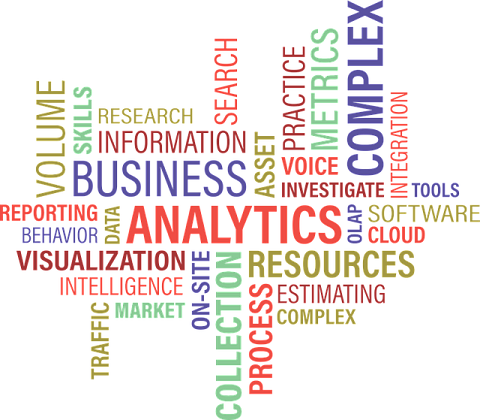Enterprise Analytics: Create your Business Strategy Now

It is said that enterprise analytics has become the backbone of today’s industry. It is a reality, and we can’t deny this because it enables business leaders to perform well and boost revenue. Apart from this, it’s the best thing for people who want to make swift decisions. Thus, these tiny yet vital things help to stay one step ahead of the market. But if you wish to take the right action, it’s crucial to understand the term enterprise analytics.
What is enterprise analytics?
In simple words, enterprise analytics is a process where you collect, analyze, and process a large set of data. However, the main aim is to extract valuable data for taking appropriate and intelligent actions. So, you can use different techniques like data mining, protective modeling, correlation, graph analysis, and visualization to achieve desired outcomes. Here are the following other points that will help you understand the concept:
| Provides an actionable plan | Define the measurable goals for business |
| Outlines vital functions to achieve goals | Identify the top performing tool that you should monitor |
| Tells how to organize the data | Monitor data quality |
| Reduce data storing cost | Helps in data management |
| It tells how ongoing processes are vital to change | Sets expectations from low to top-level workers |
EA helps to find a gap in business strategy where you can further work to identify emerging trends. Big organizations deal with extensive data and focus on cutting complex things to take the right actions.
Enterprise analytics strategy:
We all know that knowledge is POWER. But it is beneficial if you use it in the right way by understanding the concepts. So, without a strategy, you can’t help the organization to identify goals and long-term strategies. But it would help if you have the right tools and techniques to deploy and extract meaningful insights that you can later use to make business decisions. If you have the right business plan, then you would be able to get the following benefits:
- It helps to create a meaningful vision.
- You can create an end-to-end roadmap for analyzing data
But after finding and analyzing data, you need to find a place where you will store the data. The best strategy is the one that lets you control the procedures and protects the organization from risks.
What are the top reasons to form an enterprise analytics strategy?

Now you understand the definition of enterprise analytics and its strategy. But the most vital thing is to understand the top reasons to support this decision. So, in our opinion, you need a solid enterprise analytics strategy for the following reasons:
Help to understand risk ratio:
A perfect business strategy helps to understand the risk and reward ratio. If you go deep down in searching for business strategies, top-tier companies act after calculating the risk and reward ratio in a specific project. So, enterprise analytics help to understand the security implications and analyze data to maximize the benefits. Apart from this, the tools used while designing the strategy help minimize the risk and compliance violation.
Brings consistency in business policies:
It would help if you indeed have consistency to give a head start to the business. So, enterprise analytics strategy helps to achieve this purpose. For instance, by implementing enterprise analytics, you would manage the data across multiple organizational systems. However, after finalizing one strategy, you would be able to gather assets after sorting them out. Later, all these tricks help to draft a logical plan after analyzing data. Mainly it helps to improve sales performance and bring efficiency in processes.
You can prioritize data:
It’s a challenging task to get precise and valuable data from piles. Some organizations have the sources to extract useful data from piles. But if you can’t do this, then it enhances risk exposure. So, an organization needs to understand the full scope of all tools and techniques involved in the process. Thus, enterprise analytics help you in the following ways:
- It helps to understand different data cycles.
- It gives an insight into the data cycle that later let you manage things
- Apart from this, the data maps and charts help you choose between what is most and least important.
In short, with this new technique, you get a more detailed picture of the marketplace. However, based on this, you can prioritize decisions and policies.
Help you in creating responsibility & liability:
The main thing is to learn to differentiate between essential and um-important data. These things perform best when it comes to making better decisions for the business. But after finding out the relevant data, the next thing is to manage that. So, you need a separate person who will be responsible for the data handling at every step. Thus, after finding a suitable person, you can ask about processes. It means that enterprise analytics helps you through tools and techniques to set a benchmark.
Later, the designated person is accountable for the standards and whether he can achieve that or not. So, these factors help organizations meet their required goals and create a sense of responsibility in employees. Apart from this, here are other reasons why the formation of enterprise analytics strategy requires your attention.
| Performs best when it comes to improving data quality | You can identify the right analytical tools to understand insights | Let you set priorities for data |
| Help to form consistent business policies |
Furthermore, it’s best when it comes to controlling security breaches of data by identifying gaps.
Key things to consider while making a solid enterprise analytics strategy:

In recent times, we can’t deny the importance of advanced solutions, tools, and techniques. We can take an example from electric vehicle (EV) solutions that are targeting a new trend. Many companies are guiding people throughout the EV journey from awareness, education to buying. So, like EV solutions, enterprise analytics is another thing that is breaking barriers and making it easier to grow business. According to a recent survey that professionals conducted:
“Data analytics is a vital part of the business that is leading the world towards digital transformation. So, around 94% of the companies around the world should accept this.”
When companies start taking the data seriously, it improves efficiency, decision-making, and finding new income sources.
Key elements to build a strong EA strategy:
Here are some key points that will help you to build a robust enterprise analytics strategy. So, keep these points in consideration:
- The strategy should be practical, and you should be able to implement it on a broader level. Apart from this, don’t forget to incorporate the plan with existing functions and features.
- Above all, it’s vital to understand the specialized needs of the company. So, later you can bring good strategies and decisions for the business.
- It will help if you change the planning over time because it’s good to evolve the business with time. A company can’t go further without meeting advanced processes and customers’ demands.
By following the right tips, you can perform analytical processes on company broad data to identify new opportunities. As per the results of Gartner, 87% of companies have low analytics and business intelligence maturity.
Challenges associated with EA strategy:
Earlier, we have discussed the benefits of forming an EA strategy. But many challenges are associated with this. So, here are the top challenges that are associated with enterprise analytics:
- Top companies can only use 50% of their structured data to make decisions. On the other hand, organizations use 1% of their unstructured data. So, it means businesses are unable to use all their available data.
- Moreover, you will have to spend too much time managing data in the correct format. So, if we look critically, it takes up to 80% of the time to search and prepare data to run analysis.
- Later, the analysis and tools aren’t available to almost 56% of the employees. Thus, it creates chaos between the top and lower-level employees.
But before acting on the results, it’s vital to understand the pitfalls. In this way, you will know what your goals should be. So, here are factors to consider before looking for an enterprise analytics platform:
| Don’t ignore data privacy | Keep track of data ownership | Run cross-marketing analysis to find the best |
| Pay attention to features | Select a platform that can easily integrate seamlessly into your company | Don’t ignore training & support in case of emergency |
Enterprise analytics is important because businesses are challenged with a lack of scalability and decision-making skills. So, if you want to solve these factors, you should consider trying the EA solution.